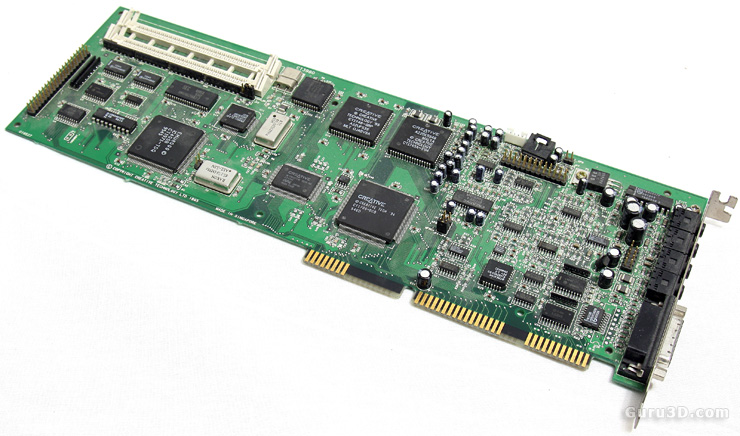1

Welcome to part two of the history of Guru3D. If you haven't done so, please read up part one first, as we continue where we left off in that article.
Back to ... technology
To keep our servers on track with the massive demand of visitors was of course a challenge, but along the lines of increased reader numbers, over the years technology changed a lot as well. Not just for servers, but for computers and their related components in general.
That very first PC I mentioned in part one (not that ZX Spectrum) had a 100 MHz Pentium processor .. 100 MHz folks.
When I upgraded to Pentium 166 MHz it was capable of pushing out 440 MIPs and a single processor contained a 5.5 million transistors. Back then, it was simply amazing as it was nearly 2400 times as many as the first microprocessor, the 4004. That 100 MHz PC was capable of 70,000 times as many instructions per second. Another example, memory used back then was roughly 32 or 64 MByte of DRAM.
So the development path of technology has changed a lot. Since this is Guru3D, I will now focus at what is our primary focus, graphics card development.
I remember it well, when I reviewed 3Dfx's Voodoo II at the time. My test system was considered to be 'high-end', with an Asus P2B and Pentium II 350 MMX processor. The motherboard had the renowned BX Chipset and that machine was jammin' with 64MB PC100 SDRAM. Storage wise I had this brilliantly massive 9 Gig Ultra DMA HD. OS was Windows '98 and we where at DirectX 5.2 level .
It's amazing how things evolved considering we now use ~3.0 GHz multi-core processors, right now 4 Gigabyte of memory is normal, and a Terabyte HDD is getting the standard these days.
Back in the day graphics adapters like the Voodoo 2 had 4MB of texture buffers in the days with the most high-end and unprecedented 12 MB of EDO memory. Back when values where 90 Mpixels/sec were the new hotness and the holy shiznit.
Graphics technology of course evolved faster than anything else, nearly exponentially, with Mpixel fill rates now of 13600 MPixels/sec, massive memory bandwidth nearing 100~150 GB/sec. 3Dfx Voodoo 3 3000 for example ran at an unprecedented 166 MHz.
We now have clock speeds that moved from MHz to nearly a GHz for GPUs.
The most bizarre shift for GPUs (ASIC wise) had to be the sheer number of transistors per GPU. Transistors are miniature electronic switches on your processor. They are the building blocks of the microprocessor.
Similar to a basic light switch, transistors have two operating positions, on and off. This on/off, or binary functionality of transistors enables the processing of information in a computer. Though this is merely a transistor count, it just tells a lot about the evolution of the graphics processor.
-
Voodoo (SST-1) 1 Million transistors
-
Voodoo3 3000 (Avenger) already had 8.2 million transistors
-
NVIDIA RIVA (hence Rivatuner ;) (NV3) 3.5 million transistors
-
NVIDIA TNT (NV4) 7 million transistors
-
NVIDIA GeForce 256 (NV3) ~23 million transistors
-
ATI Radeon 7000 (RV100) ~30 million transistors
-
ATI Radeon 9000 (RV250) ~60 million transistors
And now in 2009 we see this:
-
ATI Radeon HD 4800 series (RV770) have ~956 million transistors
-
GeForce GTX 200 series (GT200) have ~1400 million transistors
Combine that current architecture with the much higher clock frequencies, tons of memory bandwidth and voila, look at what you can do with your PC's graphics today in terms of games, and lately even parallel computing.
Where's the end you ask ? There's isn't one really .. sure over time more and more limitations will reach the development stages and evolution of the GPU and technology in general. New functions will evolve, some older ones will pass. And though the challenges ahead are exactly what they are .. a challenge, there will always be bright minds with new ideas, solutions and in the end better products for you guys.
Next page please.
 This is what a soundcard looked like back in the days. This is a Creative Labs Soundblaster AWE 32 - the size !
This is what a soundcard looked like back in the days. This is a Creative Labs Soundblaster AWE 32 - the size !
